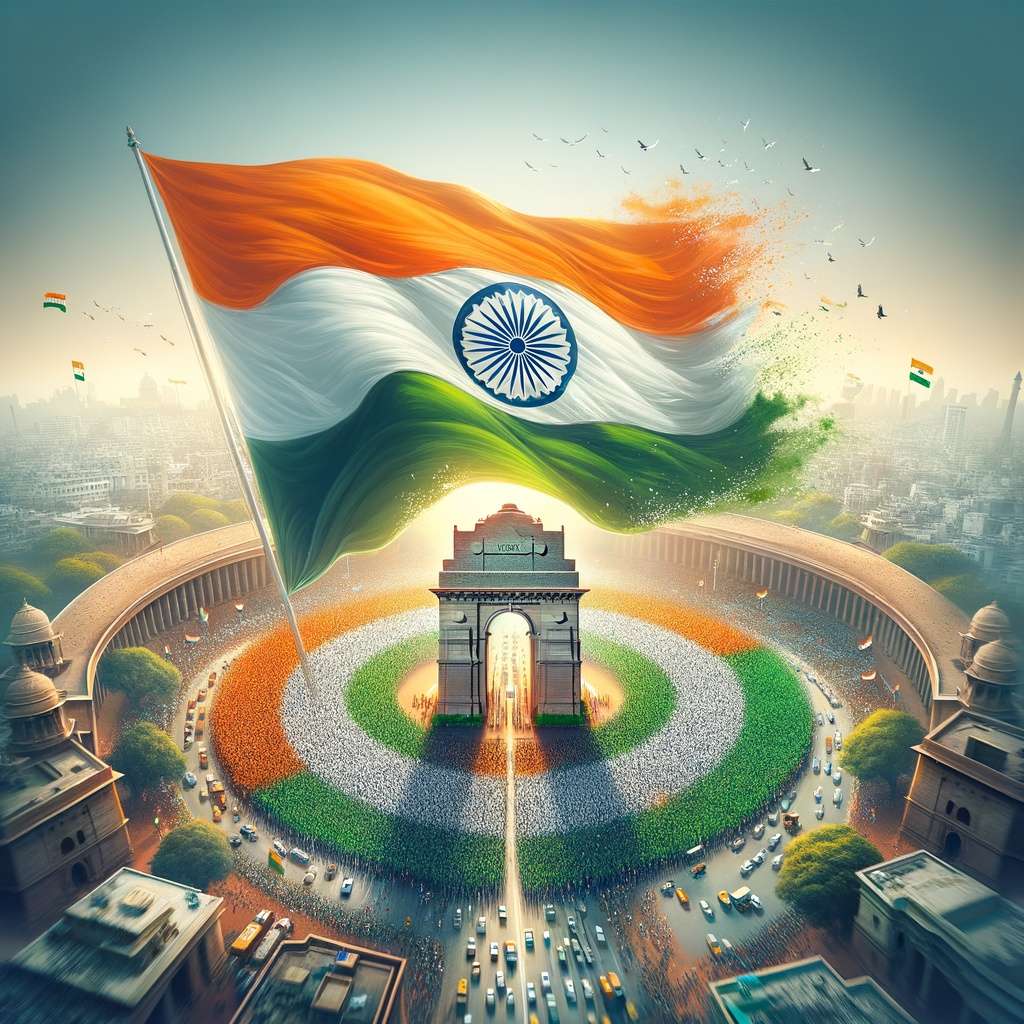The magnificence of the Mughal Empire, which dominated most of the Indian subcontinent for more than three centuries, is largely owed to India’s cultural and historical legacy. With its unique mix of Persian, Islamic, and Indian forms, the Mughals left behind a timeless and breathtaking architectural heritage. Often erected to honour love, faith, and power, these monuments dot the nation, and each tells a story of artistic genius and artistry. Discovering these wonders is like turning the pages of history, where every minute element reveals a tale of ambition and fervour.
The Taj Mahal: A Monument of Eternal Love
The Taj Mahal in Agra may be a famous example of Mughal architecture since it stands for everlasting love. This white marble monument is a masterwork of beauty and symmetry built by Emperor Shah Jahan, designed to remember his beloved wife, Mumtaz Mahal. Its ethereal air that captivates tourists is created by its amazing reflection in the Yamuna River, complex floral inlays and phrases from the Quran engraved on its walls. Designed in the classic Persian Charbagh style, the surrounding gardens accentuate its beauty even more, rendering this timeless symbol of love and loyalty more appealing.
Indian Visa for Danish Citizens
Fatehpur Sikri: The Ghost City
Not far from Agra is Fatehpur Sikri, a city established by Emperor Akbar to mark his triumph and thankfulness to Sufi mystic Sheikh Salim Chishti. Though it was the Mughal capital only for 14 years, this city is a masterwork of Mughal architecture and planning. Among its most well-known buildings, the Jama Masjid, Buland Darwaza, and Panch Mahal each combine Islamic and Hindu architectural forms. With its empty but well-preserved buildings murmuring stories of Akbar’s vision and ambition, walking through Fatehpur Sikri is like meandering through an outdoor museum.
Red Fort: The Heart of Delhi
Within Delhi’s busy centre sits the Red Fort, a colossal emblem of Mughal authority and creativity. Built on red sandstone under commission from Shah Jahan, this fort boasts large walls previously shielding the imperial metropolis. Within are monuments to the grandeur of the Mughal court, the Diwan-i-Am and Diwan-i-Khas, and halls of public and private audiences. The artistic sensibility of the time is reflected in the complex carvings, decorative motifs, and usage of pietra dura inlay work of the fort. Nowadays, it is a well-known emblem of Indian freedom where the Prime Minister delivers the annual Independence Day speech.
Humayun’s Tomb: A Precursor to the Taj Mahal
Usually considered the architectural forerunner of the Taj Mahal, Delhi’s Humayun’s Tomb was Constructed by Empress Bega Begum, his widow; this Mughal tomb epitomizes their love of garden mausoleums. Nestled within expansive gardens, the tomb’s symmetrical form, white marble and red sandstone, and Persian-inspired aesthetics create a visual feast. The monument’s significance goes beyond its beauty to include its impact on later Mughal construction, establishing the basis for the following magnificence.
The Jama Masjid: A Grand Place of Worship
Among the biggest mosques in India, the Jama Masjid in Delhi is a masterwork of Mughal architecture. Shah Jahan designed this mosque’s massive courtyard, soaring minarets, and imposing domes can house thousands of people at once. It is breathtakingly beautiful, with its white marble and red sandstone structure, geometric motifs, and calligraphy. Perched on its steps, one can view Old Delhi’s busy streets, contrasting modern turmoil and historical tranquillity.
Indian Visa for Polish Citizens
The Influence Beyond Monuments
The Mughal architectural legacy is not limited to grand buildings alone. Their impact reaches into gardens, water systems, and city design. Emphasizing symmetry and harmony with the environment, the Charbagh layout became a trademark of Mughal gardens. Structures reflecting their ability to create peaceful settings are the Shalimar Bagh in Kashmir and the Mehtab Bagh in Agra.
Indelible marks have come from even Mughal urban design ideas, such as segmenting towns into divisions and including water channels for both aesthetic and cooling purposes. Cities like Old Delhi and Lahore still bear vestiges of this careful urban design.
A Journey Through Time
Discovering the Mughal wonders of India is like travelling through time and seeing the majesty of an empire forming India’s architectural and cultural identity. These monuments are living stories, each representing the ambitions, aspirations, and creative brilliance of a bygone age, not only structures. Whether it’s the ethereal beauty of the Taj Mahal, the strong majesty of the Red Fort, or the calm elegance of Humayun’s Tomb, the Mughal architecture of India never fails to inspire and enthral us with the legacy of one of the most amazing empires of history.
More articles: Backpacking in India: The Ultimate Route for an Unforgettable Journey



